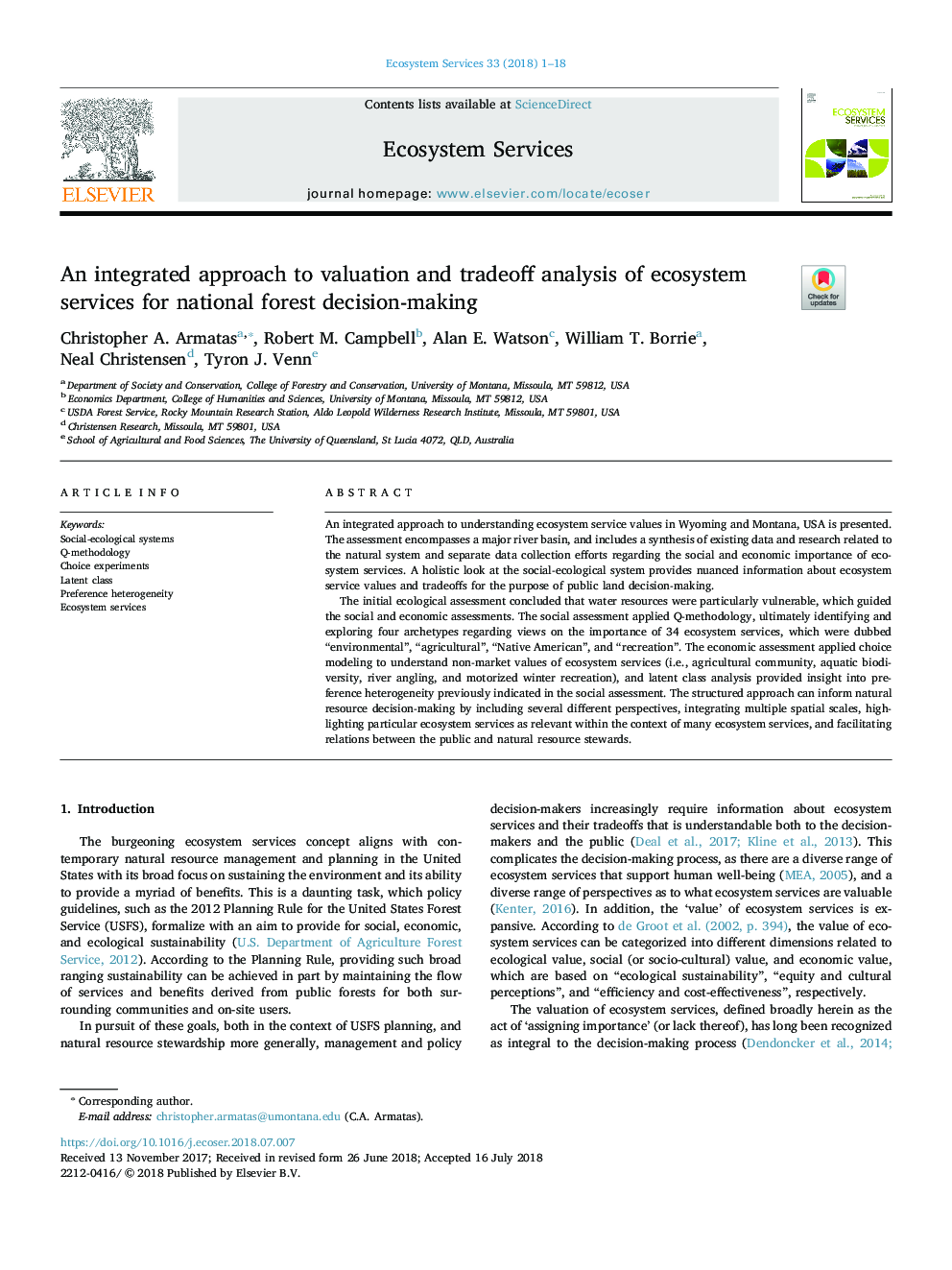| Article ID | Journal | Published Year | Pages | File Type |
|---|---|---|---|---|
| 9951761 | Ecosystem Services | 2018 | 18 Pages |
Abstract
The initial ecological assessment concluded that water resources were particularly vulnerable, which guided the social and economic assessments. The social assessment applied Q-methodology, ultimately identifying and exploring four archetypes regarding views on the importance of 34 ecosystem services, which were dubbed “environmental”, “agricultural”, “Native American”, and “recreation”. The economic assessment applied choice modeling to understand non-market values of ecosystem services (i.e., agricultural community, aquatic biodiversity, river angling, and motorized winter recreation), and latent class analysis provided insight into preference heterogeneity previously indicated in the social assessment. The structured approach can inform natural resource decision-making by including several different perspectives, integrating multiple spatial scales, highlighting particular ecosystem services as relevant within the context of many ecosystem services, and facilitating relations between the public and natural resource stewards.
Keywords
Related Topics
Life Sciences
Agricultural and Biological Sciences
Agricultural and Biological Sciences (General)
Authors
Christopher A. Armatas, Robert M. Campbell, Alan E. Watson, William T. Borrie, Neal Christensen, Tyron J. Venn,
